Summer jasmine (Jasminum) is a popular climbing plant loved for its rich, sweet scent and delicate, star-shaped flowers. Also known as common jasmine, this vigorous climber comes in a range of colours including white, pink and cream.
By contrast, winter jasmine is not actually a true climber but can be trained to grow against walls where its cheerful yellow flowers brighten up gardens during the colder months. Flowering from as early as January, what it lacks in scent is more than made up for in colour and structure.
Here’s everything you need to know about growing jasmine. For more climbing plants, see our full range here.
Where to plant jasmine
Jasmine prefers fertile soil with good drainage (moist but not soggy). Summer varieties like a sunny, sheltered spot, while winter jasmine will tolerate partial shade.
Jasmines are versatile plants that will happily grow in the ground, in containers, or as houseplants – perfect for filling your home with summer perfume during the colder months. Even tender and half-hardy varieties benefit from some time outdoors, but if you live in colder climes you may wish to grow these in containers so they can be brought indoors over winter.
When to plant jasmine
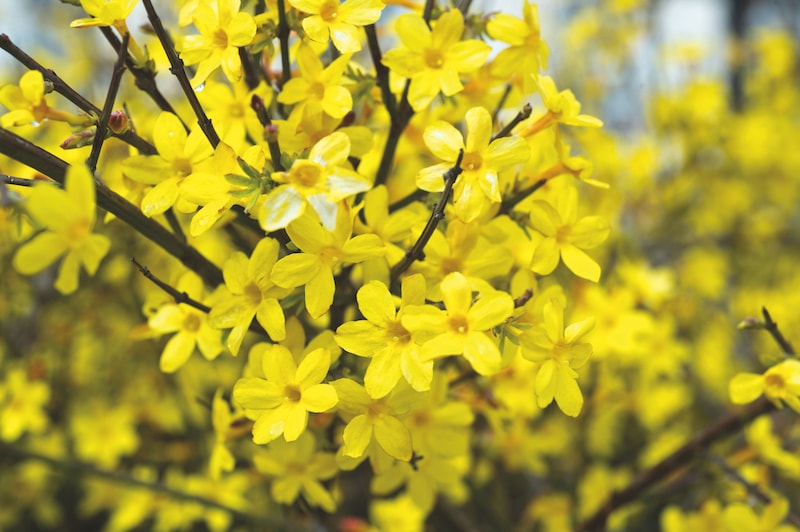
The cheery yellow flowers of winter jasmine brighten up the garden when few plants are blooming
Image: Jasminum Nudiflorum from Suttons
Plant summer jasmines in spring or autumn and winter jasmine in autumn or winter. To train as climbers, choose a wall or fence where the soil is well-drained, and tie the main shoots to a suitable support such as a mesh, wire or trellis.
Prepare the soil by digging in some compost, and water your jasmine plant well before planting out. If planting into a container, put pieces of broken pottery or some stones in the bottom to assist with drainage, then add compost.
Carefully tease out the roots of your jasmine and then plant it at the same level as it was in its original pot. Fill in, water well and add a liquid feed.
How to care for jasmine plants in pots and in the ground
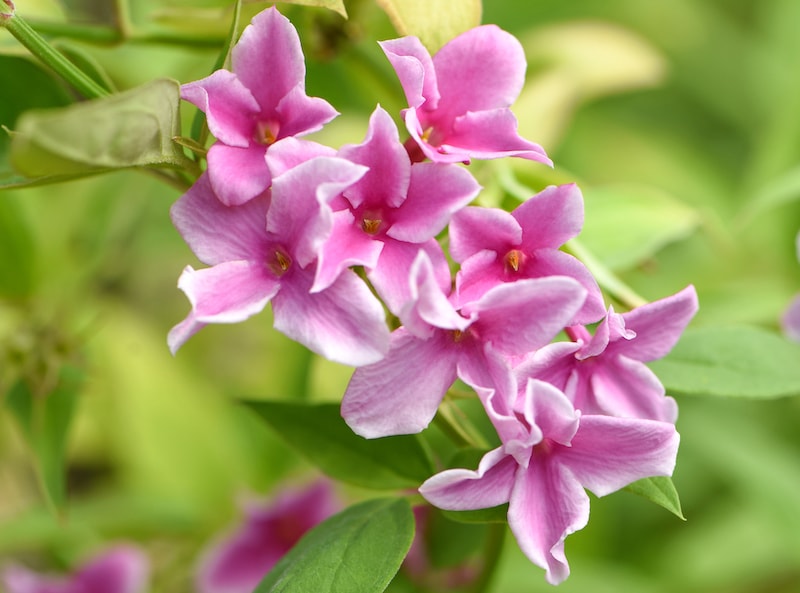
This scented, candy-pink variety is ideal for containers and quickly covers a trellis
Image: Jasminum x stephanense ‘Starry Starry Summer Scent’ from Suttons
It’s important to keep your jasmine well watered during dry spells, especially when growing in containers. Water the plant regularly in its first year until the roots are well established, and train it across its support. A high-potassium feed is also beneficial and encourages the plant to produce more flowers.
Apply a mulch of well-rotted garden compost or manure (leaving a gap around the base to prevent the stems rotting). This will help to keep down weeds, reduce moisture loss from the soil, and insulate the roots over winter.
How and when to prune jasmine plants
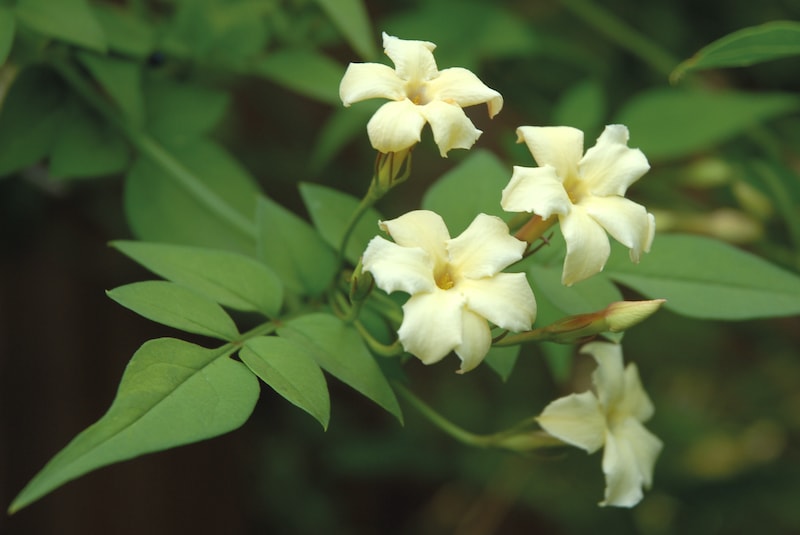
This elegant climber, with its star-shaped flowers and delicious perfume, is a popular favourite
Image: Jasminum officinale ‘Clotted Cream’ from Suttons
Prune your jasmine just after flowering, removing any weak, tangled or damaged shoots. Whether indoors or outdoors, jasmine grows vigorously so regular pruning is essential if you want to keep the plant healthy and tidy.
Jasmine copes well with extensive pruning, so an overgrown plant will recover well after even the most enthusiastic trim. However, it’s worth bearing in mind that pruning an overgrown plant right back may result in no flowers for the following two to three years.
Common and winter jasmines are fully hardy so should be fine outside all winter. Tender and half-hardy varieties don’t like prolonged cold, so bring them indoors if potted, or mulch around the base for insulation. If growing jasmine indoors, keep the plant in a cool and bright room and make sure the soil remains moist.
Outdoor varieties don’t tend to have a problem with pests, although a regular check of young plants for aphids is advisable. Indoor jasmines may attract red spider mites and other sap-sucking insects, which can be treated if caught early.
Jasmines are low-maintenance plants that reward you with height, structure, and an abundance of pretty flowers. Browse our collection of flowering shrubs for more inspiration.
Lead image: Jasminum officinale from Suttons
Last Updated on December 3, 2025 by Suttons Horticultural Team



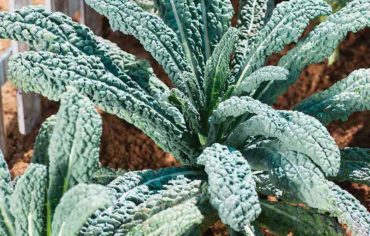

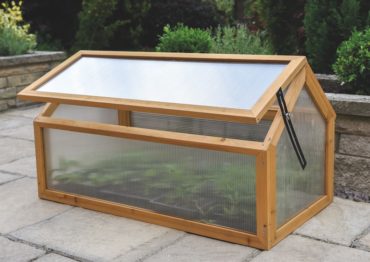
How far apart should I plant common jasmine as I have brought three for a six foot wide trellis??
Hi Team
We lost a star jasmine to honey fungus during the Summer of 2022.
We have since replaced it with a 6 foot ( fence high ) plant which has been trained at the nursery into a twist.
It sit in a gap between garria eliptica and has now reached 8 feet in height.
In order to get the plant to bush out sideways can we safely prune it at fence height or will this stunt future growth ?
Regards
Barry